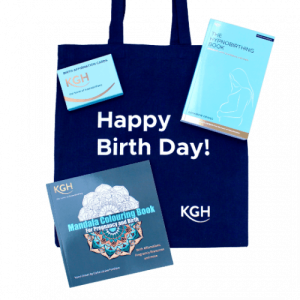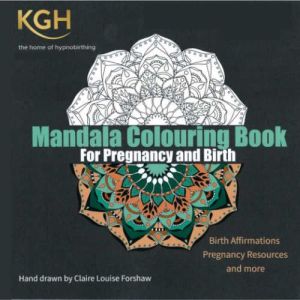Diana Butterworrth, a district nurse found relief in a healing touch.
Details of Katharine Graves’ previous work as reported in The Times Newspaper Family Supplement.
Read this article on the The Times Newspaper Website.
Diana Butterworth, a district nurse, is robustly sceptical of complementary medicine, preferring to stick to mainstream treatments. So she did not expect much from the kinesiologist (a practitioner of the alternative therapy that studies body movement) whom her inlaws suggested she consult about her back pain.
Butterworth arrived at the home of her husband’s parents near Andover, Hampshire, three years ago “somewhat crooked” after spending three days replanting her garden. “It must have been obvious to them as I got out of the car that I was in pain,” recalls Butterworth, 36, who lives in Bedfordshire with her husband William and three young sons. “I am fairly sure that I injured my upper spine lifting a patient badly during my nursing training, and my lower back stiffness could be to do with the fact that I’m 5ft 10in. Things have got worse since I turned 30. I began to have a sharp pain that took my breath away when I made a sudden movement; for example, when I was changing nappies, or unloading the dishwasher.”
Butterworth had visited her GP, who referred her to a physiotherapist. Six sessions brought the pain under control, but within a year she was stiffening up again. “The pain kept me awake at night and my back felt sore as I put my feet on the ground in the morning.” She felt she had little to lose when her inlaws suggested a visit to the kinesiologist Katharine Graves, who lives near by.
Medical practitioners tend to regard it as among the wackier complementary therapies and rigorous clinical trials have failed to prove that it works. At the core of the therapy lies the concept of muscle testing. According to kinesiologists, the behaviour of certain muscles can reveal where a patient’s problems lie and give clues as to how he or she should be treated. “Everybody who comes to see me says it is weird,” admits Graves. “And if they don’t say it, I do, because it needs to be said. But I see it work every day and sometimes the results seem miraculous. Just one session can be enough to resolve problems that have gone on for years.”
Having established that Butterworth was suffering from back pain, Graves used muscle testing to determine how best to treat it. Applying light pressure to her patient’s outstretched right arm with one hand, she touched the thumb of her other hand to each of her fingers in turn. When Graves’s thumb and second finger met, Butterworth’s arm involuntarily dropped down, indicating that her pain had an emotional component. “The amazing thing about kinesiology is that it tells you with complete precision where the problem is and what the body needs to treat it,” says Graves. “If you have had a bad back for a while, there may well be worries and tensions going on that are emotional.”
Allowing the energy to flow
With her patient lying on the couch fully clothed, Graves tested the 14 meridians (energy points) in Butterworth’s body, touching them to check whether energy was flowing through them freely. Where she felt blockages, she applied gentle pressure to known acupressure points. “Different muscles relate to each meridian. With one hand, you hold the acupressure point on a meridian that lacks energy and link it via the other hand to a meridian that has energy: it’s rather like jump-starting a car. When the meridians come into synchronicity, you know the job is done. There’s usually some little sign such as a sigh, or a tummy rumble. When you check the body again, the arm will not drop.”
Butterworth admits that she found the whole process extraordinary. “My arm would suddenly drop as if I had no control over it. At the beginning of the treatment I felt quite sharp pain when Katharine asked me to put my head in certain positions. After she had worked her way around my body, the pain had gone.
“Normally after a long bout of gardening I would expect my back to go into spasm and be even more painful than usual, but seeing Katharine was like taking antiinflammatories. I had no trouble at all afterwards and the treatment was incredibly relaxing.”
Graves, who has been practising for ten years and is also an instructor, uses craniosacral work, nutritional therapy and hypnotherapy as well as acupressure. “No two people with the same problem are alike and it is helpful to have a wide range of tools in your tool box,” she says. “Every consultation is precisely tailored to the person with whom I am working.”
When Butterworth visited Graves again this summer after a recurrence of her lower back stiffness, the kinesiologist used a different technique from her treatment repertoire. While her patient held out her right arm, Graves touched bottles containing Bach remedies: when Graves’s hand reached the remedies rock rose and beech flower, Butterworth’s arm dropped. She used the same method to identify how many drops were needed and repeated the process with a list of nutritional supplements.
“My hand fell when she merely touched the names of three supplements on her list,” says an incredulous Butterworth. “To be frank, I struggle with the whole idea. This is not what I normally do and part of me cannot believe it works. But both times I have seen Katharine I have felt much more comfortable for some time afterwards. If it works – and it seems to for me – I’d be a fool not to use it.”
Kinesiology facts
What is it? Based on principles of Chinese traditional medicine, kinesiology was founded by a US chiropractor in the 1960s, to detect energy imbalances in the body. Muscles are linked via nerves and, it claims, to organs via energy pathways called meridians. Their response to tests can point to problems.









